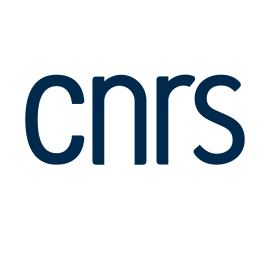Hai Yen Ta, PhD student at IMRCP, has defended her thesis on capillary electrophoresis for the analysis of fatty and amino acids

Hai Yen carried out her research in the BIBAC team at the IMRCP laboratory.
On November 18th, she defended her thesis entitled: "New application of capillary electrophoresis for the analysis of free unsaturated fatty acids and amino acids".
Capillary electrophoresis (CE) is a well-known separation technique for the analysis of biological compounds with its advantages such as the simplicity of installation, the low operating cost and the consumption of very small volumes of sample and solvents. It is widely used in the studies in various fields, for example the medical analysis, the pharmaceutical and cosmetic industries and also in food.
Separation of fatty acids (FA) is certainly the least developed application in the CE. However, by comparing it with conventional methods by gas chromatography (GC), some quality work has marked the discipline using capillary electrophoresis in a micellar medium and UV detection (MEKC-UV). The MEKC method has shown advantages over conventional GC analysis. It allows the direct injection of a lipid hydrolysate after saponification, without extraction or derivatization. Since only unsaturated FA absorb well in UV, the limitation of these methods is the detection.
The coupling between CE and mass spectrometry (MS) is more and more developed to take advantage of the MS (i.e. sensibility, structural information). The CE coupled to ESI/ MS need to have a volatile micellar medium as electrolytes in order to obtain a separation, still in MEKC, of the analytes. The most common micelles for FA analysis are micelles of SDS, which are particularly non-volatile and unfavorable in CE/ MS.
In the literature, the use of micelles of perfluorooctanoic acid has been reported for the analysis of polar compounds. In this thesis, a new MEKC-UV method using ammonium perfluorooctanoate (APFOA) has developed to separate the standards of unsaturated free FA C18. The electrolyte containing 50 mM APFOA in 10% methanol give the best separation of three 3 mono-, di-, tri-unsaturated FA: oleic acid, linoleic acid and alpha linolenic acid in less than 20 min. But the use of this perfluorinated compound, which has very little affinity for perhydrogenated groups was a challenge, and raises the question of understanding how is the separation of these FA with perfluorinated micelles.
Characterization studies of these 3 fatty acids in the optimal separation medium have been carried out using various techniques such as NMR, light scattering, small angle X-rays scattering, and transmission electron cryomicroscopy. The results showed that there are different objects of various sizes in the different acid samples. This suggests the different behaviors of these acids in the separation medium of APFOA. These results allow to explain a new mode of separation. The first results obtained in CE-MS system are promising and open up the possibilities to continue working on the coupling of perfluoro-MEKC-ESI- / MS.
In the second part, she focused particularly on the analysis of Tryptophan (Trp), one of the essential amino acids (AA) in protein metabolism and the precursor in the synthesis of monoamines which are linked to depression. CE coupled to laser-induced fluorescence detector (CE-LIF) has been a widely used for the analysis of AA in biological fluids. It requires labeling of AA, for example with CBQCA (3- (4-carboxybenzoyl) quinoline-2-carboxaldehyde). However, despite the sample preconcentration method applied, her results showed a difficult to detect the labeled Trp-CBQCA in CE-LIF (LOD Trp = 6 uM). She has shown that this derivative has very low fluorescence, certainly the least fluorescent of all the AA. Consequently, for the analysis of AA involved in depression (Trp, Val, Leu, Ile, Tyr), if LIF detection is useful for the last four AA, it is limited for Trp. This point has never been reported in the literature and implies the need to change the detection mode. Thus, the use of CE coupled to a contactless conductivity detector (CE-C4D) allows to obtain a better detection limit Trp (LOD Trp = 2 uM). This confirms that CE-C4D is a method of choice for the analysis of Tryptophan.
Highlight of the thesis:
> A patent application is pending
Congratulations to Hai Yen for the quality of her work!


